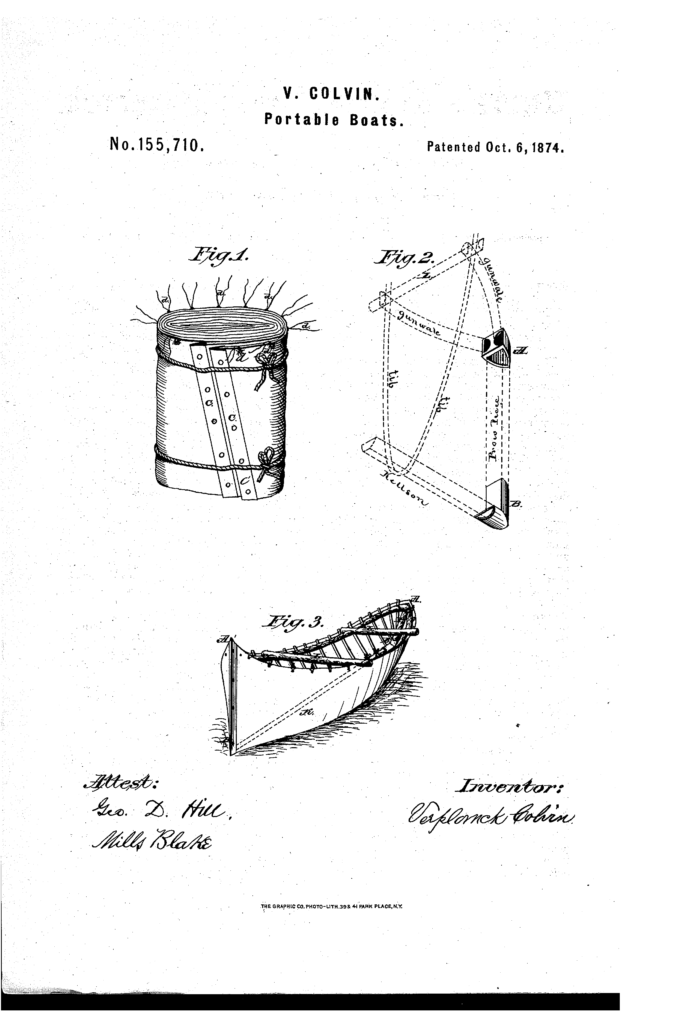
The “Maria Theresa” made by Troy’s Waters & Sons isn’t the only Capital District boat somewhere deep in the Smithsonian’s collection. Famed Adirondack surveyor Verplanck Colvin, whose adventures measuring the wilderness certainly called for a lightweight method of travel, patented a portable canvas boat that was, like the Maria Theresa, displayed by the Smithsonian at a Philadelphia exhibition in 1876, and presumably socked away somewhere in the nation’s attic afterward. Colvin’s boat was manufactured by R.A. Scott & Co. of Albany. At least, the canvas part was; the idea was that the frame could be cut out of any reasonably straight tree limbs to be found in the forest.
“This boat consists of a canvas exterior made thoroughly water-proof by a preparation which preserves the strength of the canvas and prevents decay and oxidation. It is shaped like a canoe, sharp at both ends, and cuts the water handsomely. Along the sides and bottom are leather thongs, by which the boughs and limbs cut for frame can be lashed securely to the canvas, with the assistance of the four leather framing blocks or sockets (two for each end), which connect the stem and stern posts (or prow pieces) with the keelson, and it can be readily put together anywhere in the woods, no tools being required for the purpose, except such as are always carried by a party of sportsmen, or others, an ax or hatchet only being needed. The whole of it can be packed away in a space 24 inches long, 6 inches wide, and 3 inches thick. The size now made (No. 3), although but 12 feet long, will carry six men, or four men with their necessary baggage, and weighs but 12 pounds when rolled up. It has been tested in a heavy sea with a frame of green boughs cut only two hours before, and carried a weight of 700 pounds safely and easily.”
